
Here in the future the bookstores are full of actual translated Japanese manga, by actual Japanese manga artists, printed left to right, enjoyed by millions. Also tons of manga style comics by Western roundeye devils working in the manga style. It's truly the age of manga.
But did you know that not so long ago there was no manga in America? Did you know that, spurred on by the TV cartoons they watched and reading Frank Miller interviews where he talked about something called "Lone Wolf And Cub", some Americans took it upon themselves to do comics in the Japanese style? Or at least what they thought was the Japanese style?
Furthermore, did you know that these Americans by and large didn't know what the hell they were doing? Didja? Huh?
Thus began a time of great confusion in the land... a time we now know as... the Age Of Fake Manga.
America knew of Asian culture mostly through fine films starring men hitting each other in the sternum. These martial arts epics inspired many works of great brilliance. They also inspired some awful junk, like this example from "Ninja Funnies #1"
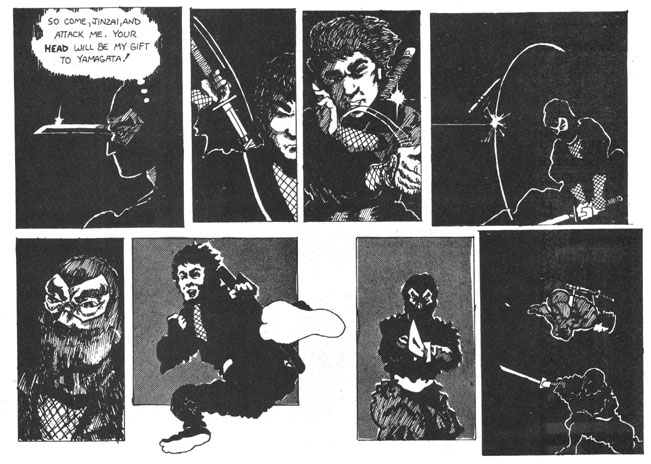
Though it's not funny, it DOES star ninjas, some of whom are posed quite dramatically in illustrations based on stills from Bruce Lee movies. Lots of narration and silent panels indicate a truly comprehensive knowledge of the comics of Frank Miller, especially the ones with ninjas in 'em.
Other works in the "ninja" genre weren't quite as, uh, referenced.
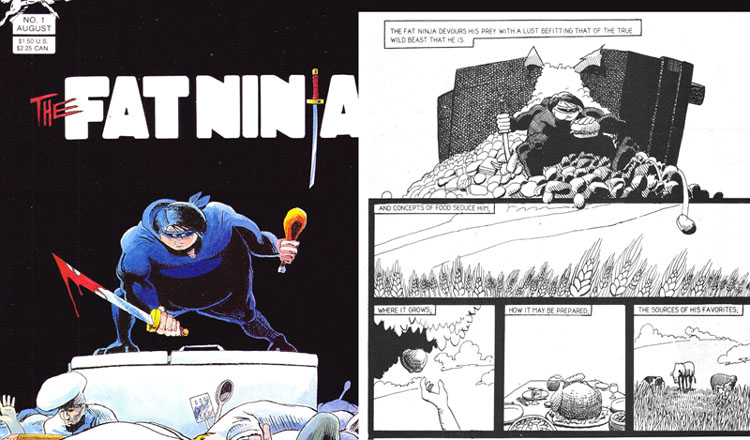
The Fat Ninja is a ninja who is fat. He's fat because he eats a lot. The heavily narrated story concerns his never ending mission to get more food. Kind of a self-perpetuating cycle of co-dependency this ninja has gotten himself into.
As usual, the Japanese were there first, with the funny and sadly un-imported manga "Sasuga No Sarutobi", a story about Nikumaru, a super ninja of Sarutobi clan who is overweight but would rather chase the girl next door.

Martial arts madness continued to plague American indy B&W comics, as we see here in "Eagle". Not the Kawaguchi presidential candidate manga, the -sigh- ninja.

Using all of his super ninja power, Eagle beats the hell out of a lot of other ninjas. This is what passed for entertainment in the 80s, kids - this, and Atari.
But Eagle wasn't the only tightly rendered ninja fighter ninja beating ninja ass. Ninja ninja ninja.

Shuriken is the story of a nice Japanese girl with enormous eyelashes who occasionally puts on a leotard and pummels people into bloody pulps. Its charmingly naive, anime-inspired artwork proved successful enough to last a number of issues, including a photo cover starring some girl the artist met at San Diego Comic Con.

The story came to a climax as Shuriken fought her evil brother who wore a slightly comical mask. Yin-yang symbol - mystical philosophical emblem, or hackneyed gimmick traced from a Chinese restaurant placemat? You decide.
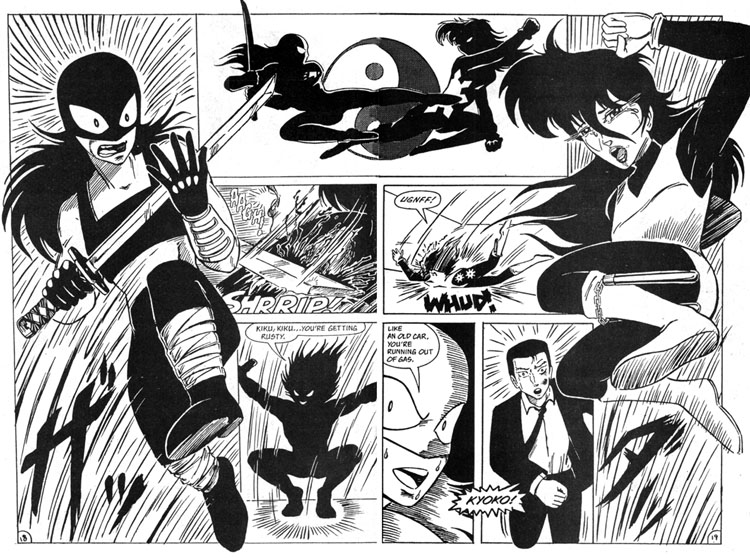
Oh snap bro! "Like an old car, you're running out of gas"? As opposed to those new cars that never need fill-ups??
But it wasn't all ninjas and martial arts. Other Asian pop culture cliches got abused too - like, say, giant robots!
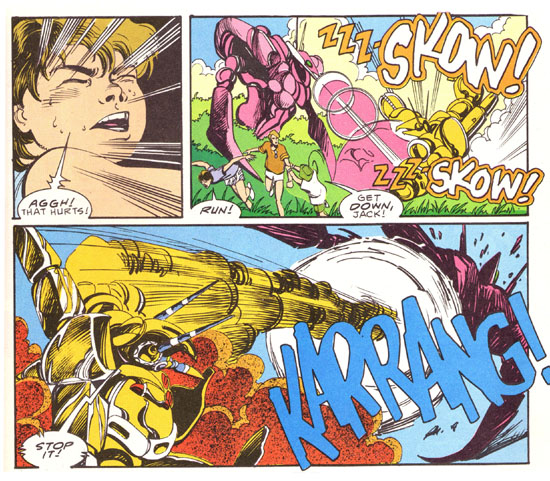
Dark Horse's "Mecha" was a full-color giant robot extravaganza starring brave heroes trying to cope with over-inked, vaguely designed super robots. Confusing, but competent. Unlike our next feature:
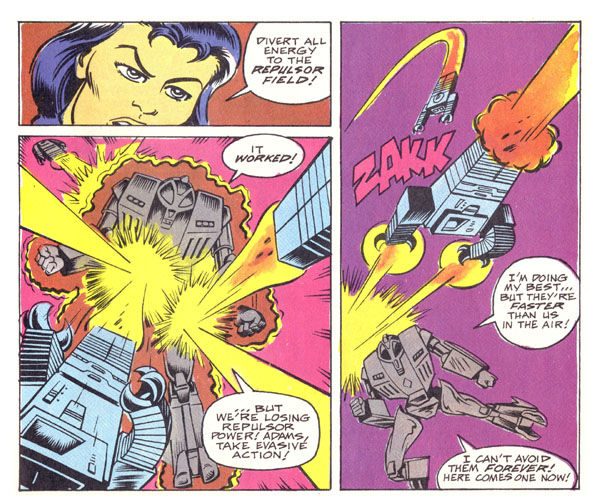
Now Comics' "Dai Kamikaze", on the other hand, is a remarkably terrible, hideously colored strip about the worst looking giant robot in the world, battling what appear to be cigarette machines with arms. Or maybe they're refrigerators. It's hard to say.
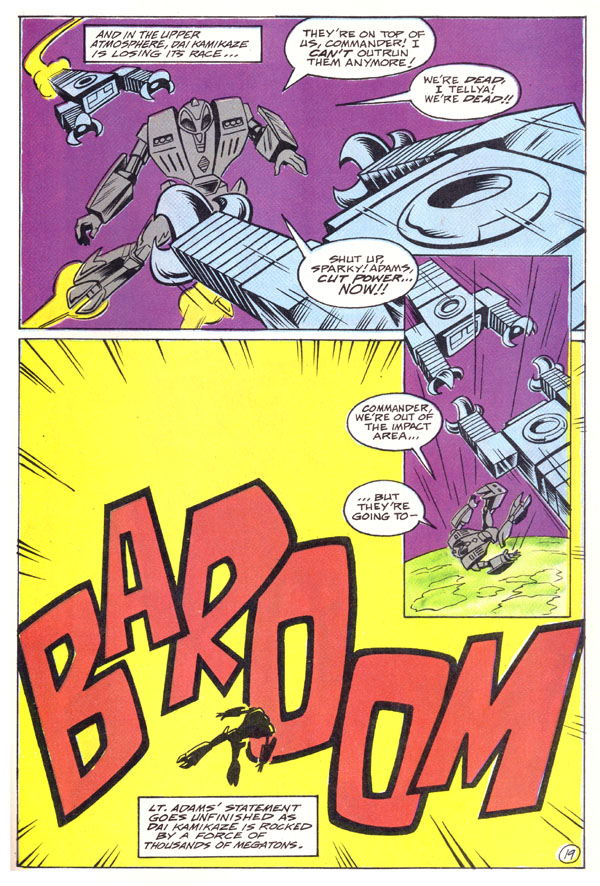
That's sound military advice - just get out of the way and your enemies will kill each other!
Even classic Japanese anime characters suffered Americanization; Gigantor found itself the star of an Eternity feature.

Drawn off-model by William Jang and written by a couple of really stupid... um, never mind.
Anyway, Now Comics published their own Speed Racer comic for quite a few years, proving there's something about heroic race car drivers that American audiences love.
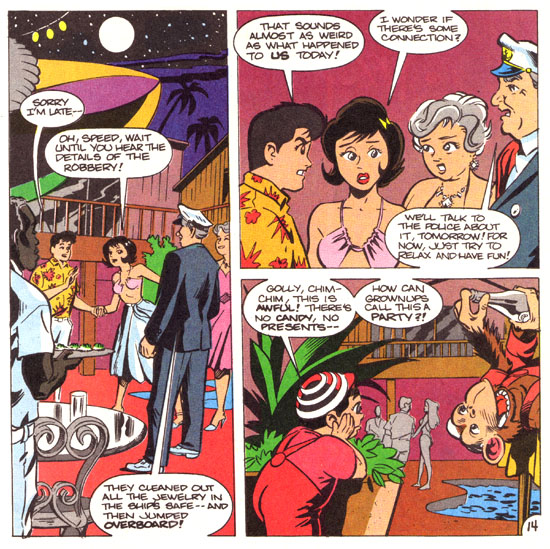
The characters are actually on-model, which is nice to see for once. But what's missing from this Speed Racer comic?
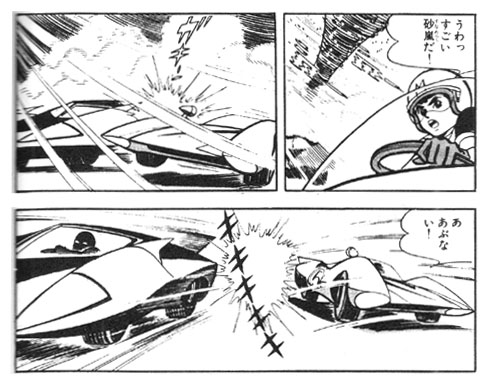
Oh yeah... racing. Racing, evil competitors, natural disasters, death... you know, Speed Racer stuff.
Speaking of death, it's something you'll no longer fear once you've read an entire issue of what's next.
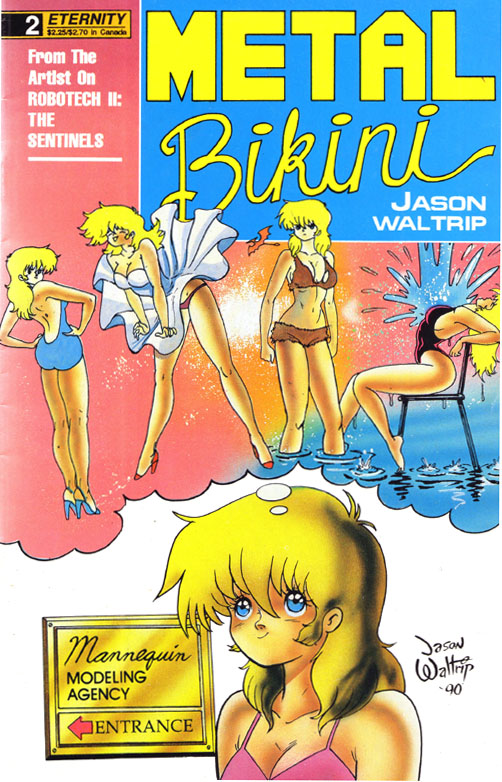
"Metal Bikini" is the story of a young blonde girl with large breasts. And... no, that's all.

You see, she wants to be a model, but the photographer tried to put the moves on her! What a surprising turn of events. For 1930.
The same artist would later bring us another series that was totally different and a complete departure in every way.

"Amazon Gazonga" is the story of a young blonde girl with large breasts - who's an AMAZON!!! So different and new.
Nope, the fact of the matter is that Americans were knocking their brains out trying to do the Japan thing, and they were all failing miserably... except for one book...
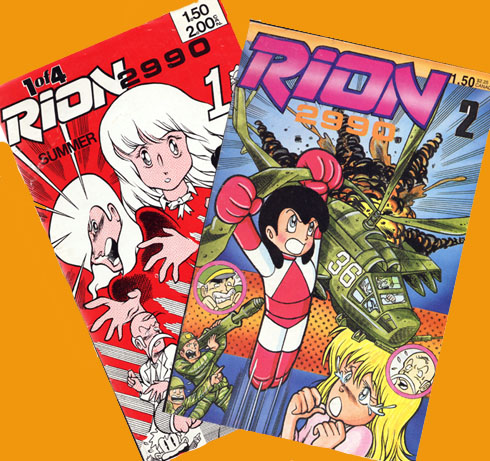
Rion 2990 was that rare of things, an American manga style strip drawn by somebody (Ryan Brown and Doug Brammer) who actually knew what manga was and how it worked.
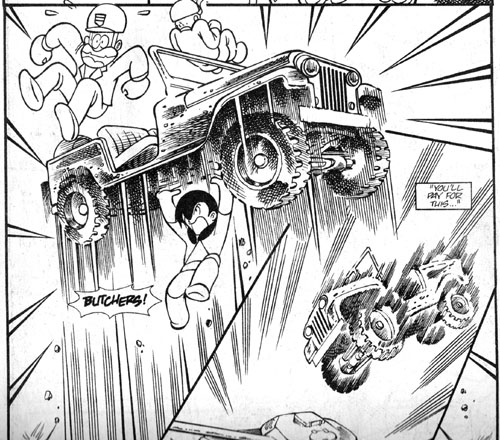
Speed lines, screentones, deformed characters, realistic backgrounds and machines, an Astro Boy type hero battling tightly rendered crosshatched super robots - what more could you want?
And, more importantly, how did a couple guys from Ohio nail the manga look so well, so early? And whatever happened to those guys anyway? Why don't I see their manga in bookstores??
Now of course the manga look is everywhere. It's a cliche that frustrates art teachers and superhero fans. Are we jaded by our good fortune? Were things more fun back when manga was weird and foreign and Americans did it badly?
The answer, of course, is that one book was fun, and everything else stank on ice. Go buy Toward The Terra and Dr Slump and shut up or NINJAS WILL KILL YOU!!
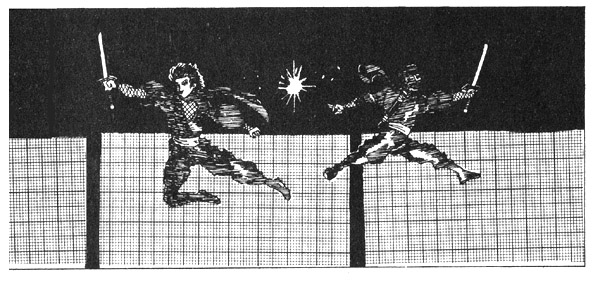
PREVIOUS STUPID COMICS
NEXT STUPID COMICS
BACK TO STUPID COMICS INDEX
BACK TO MAIN INDEX




















